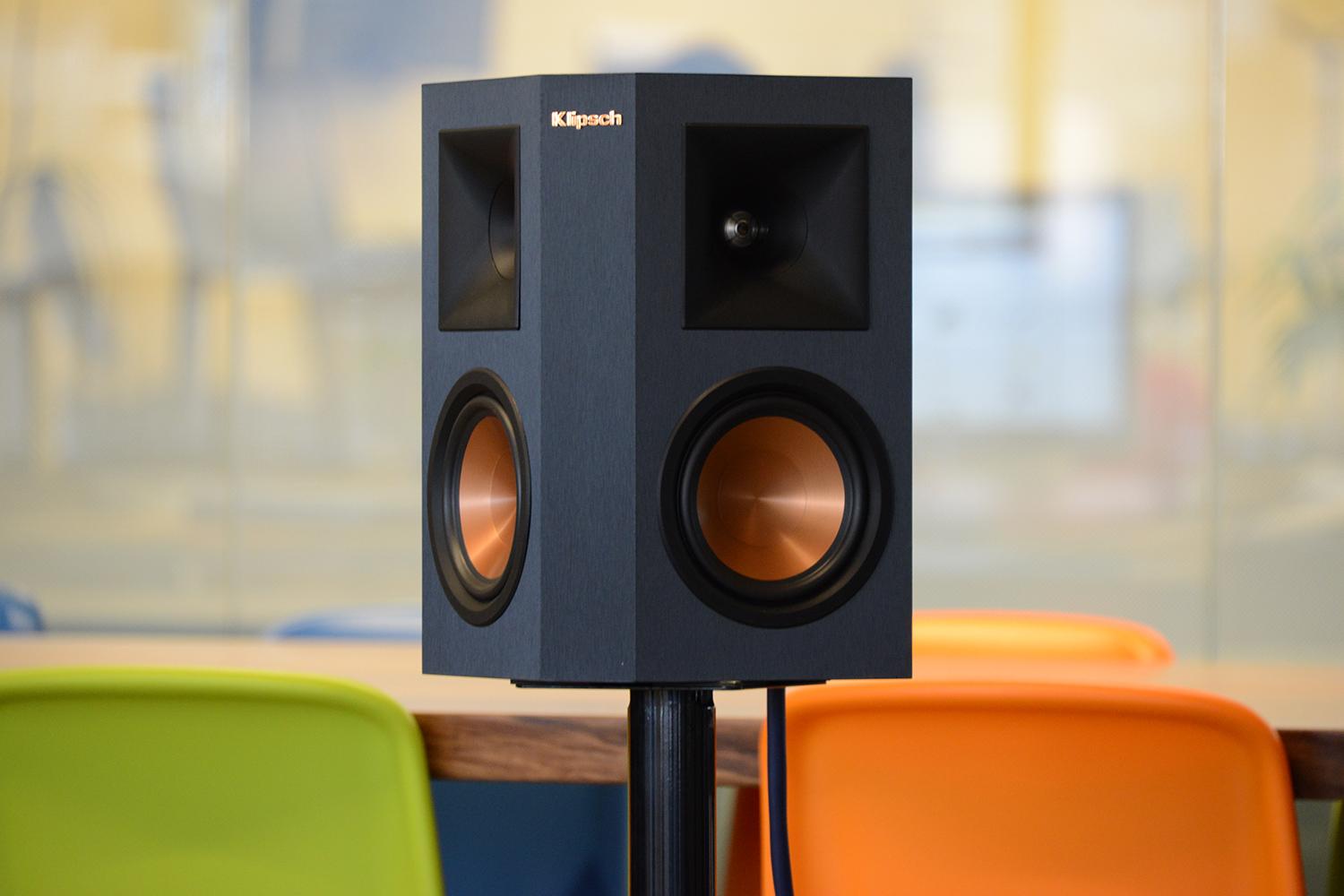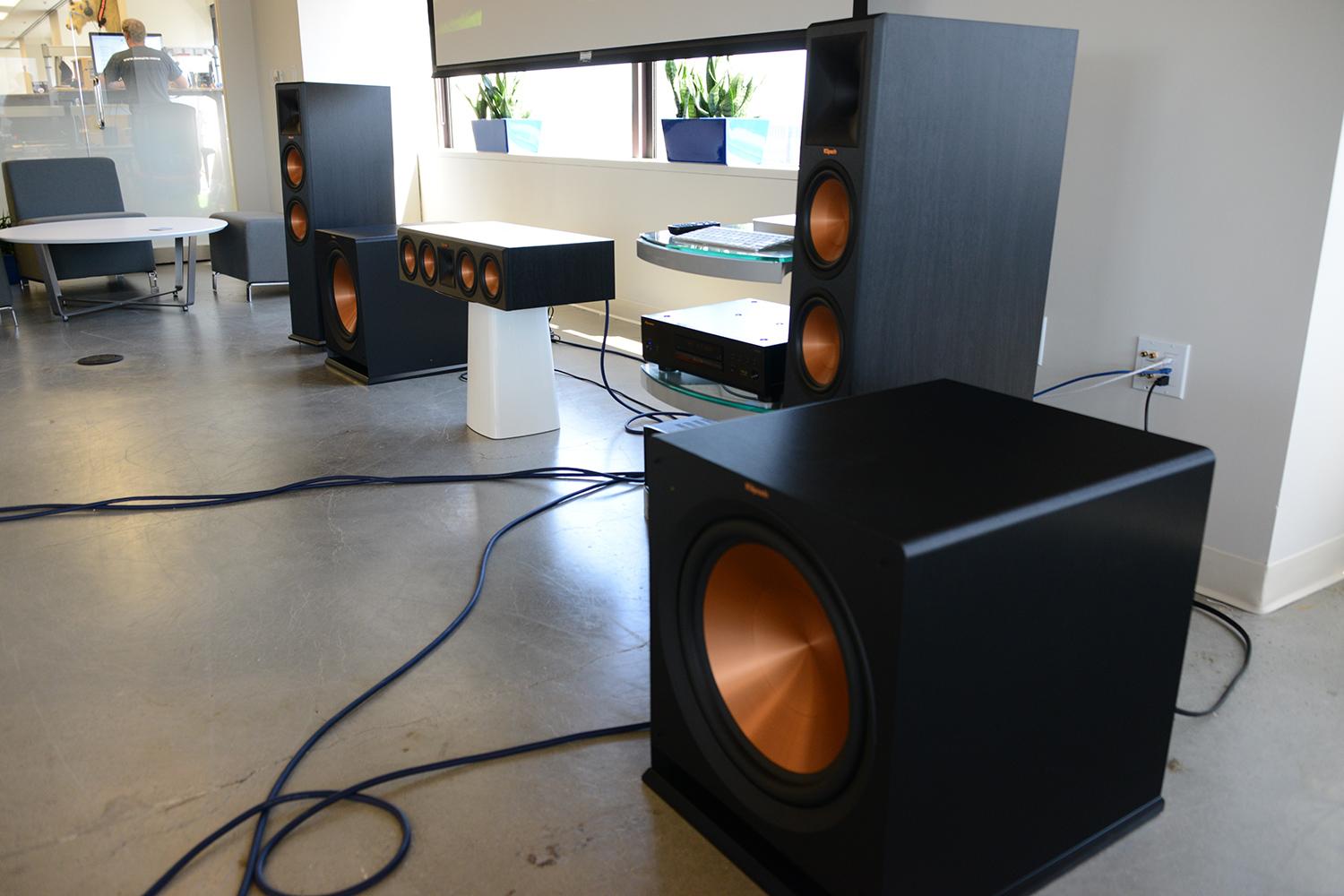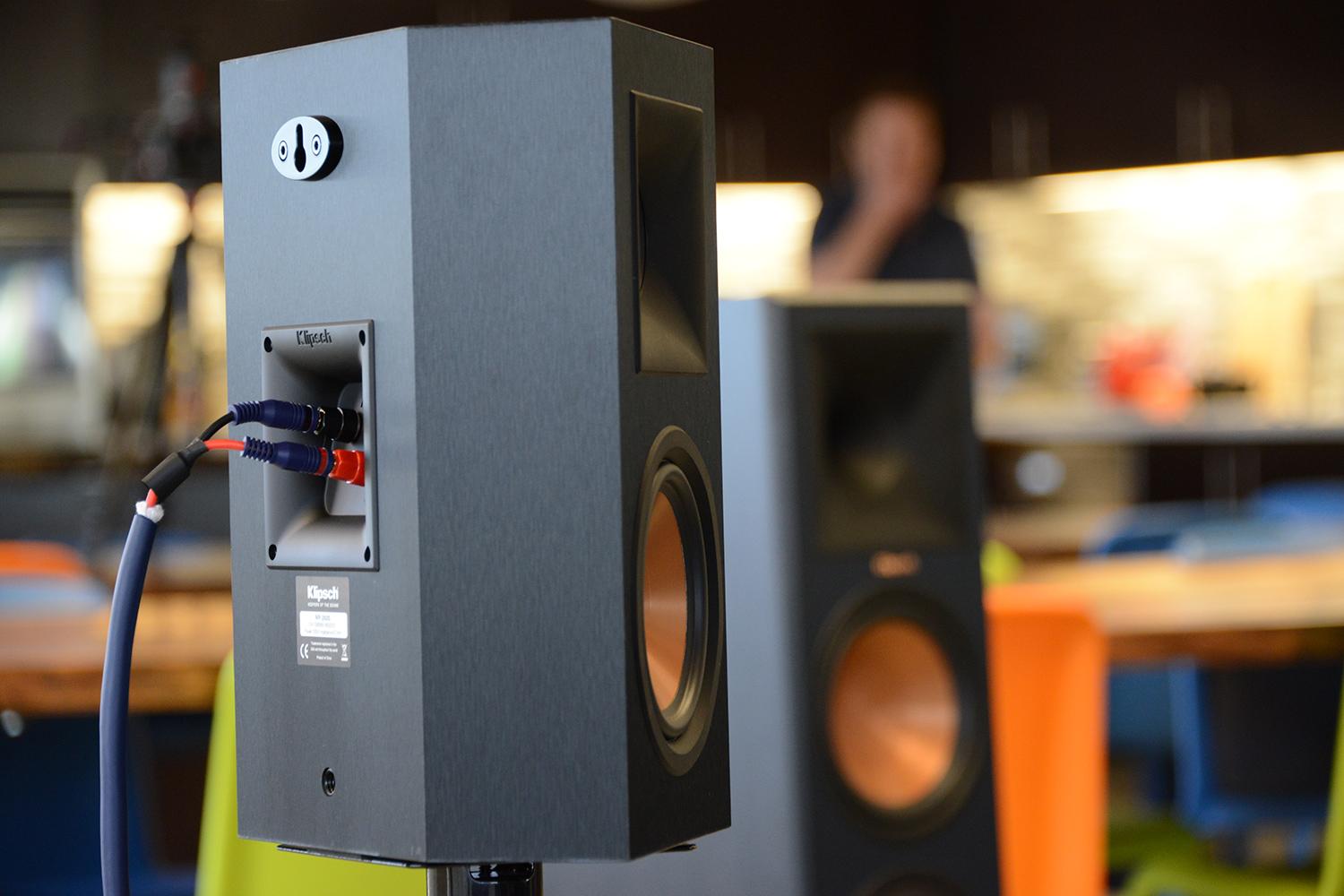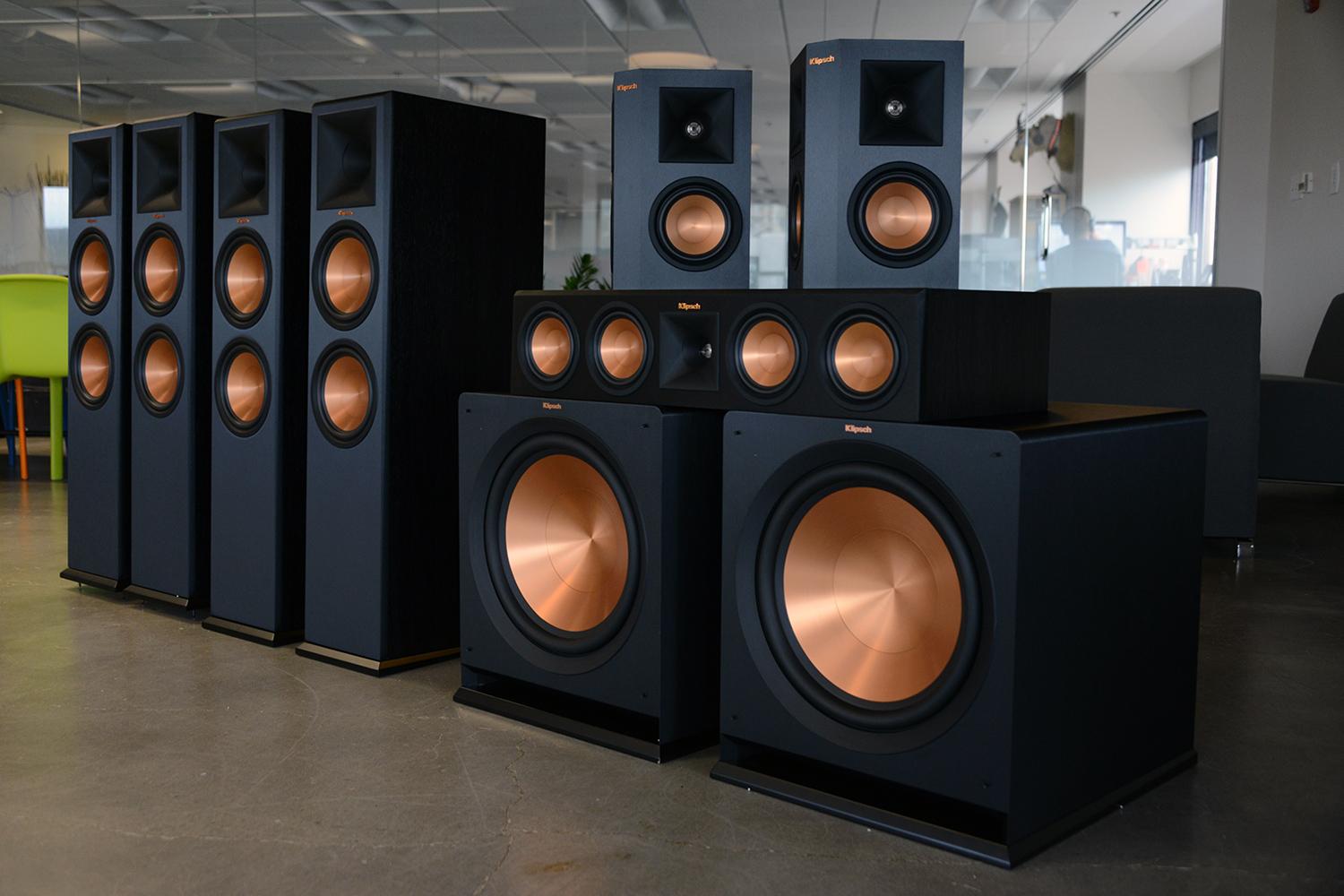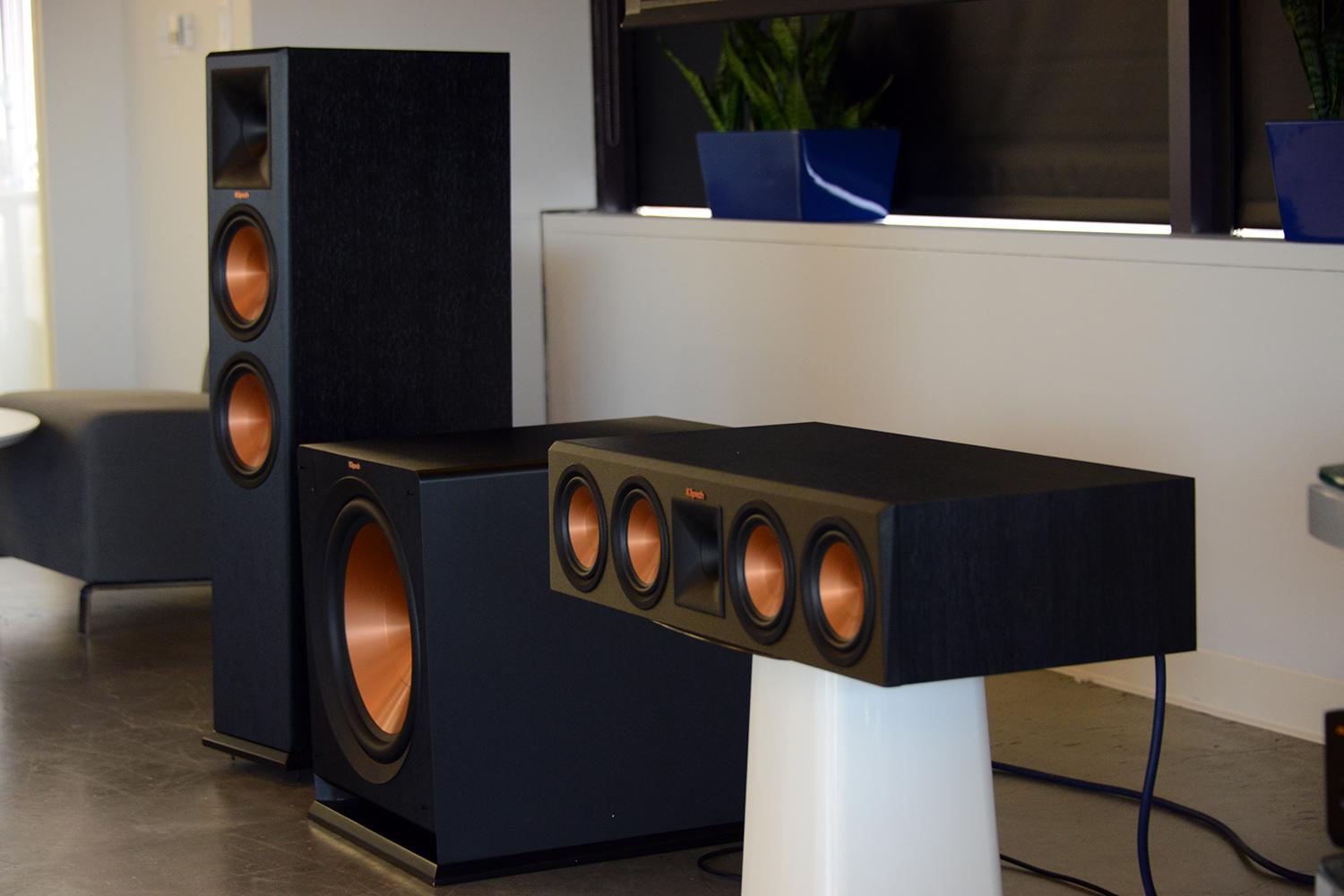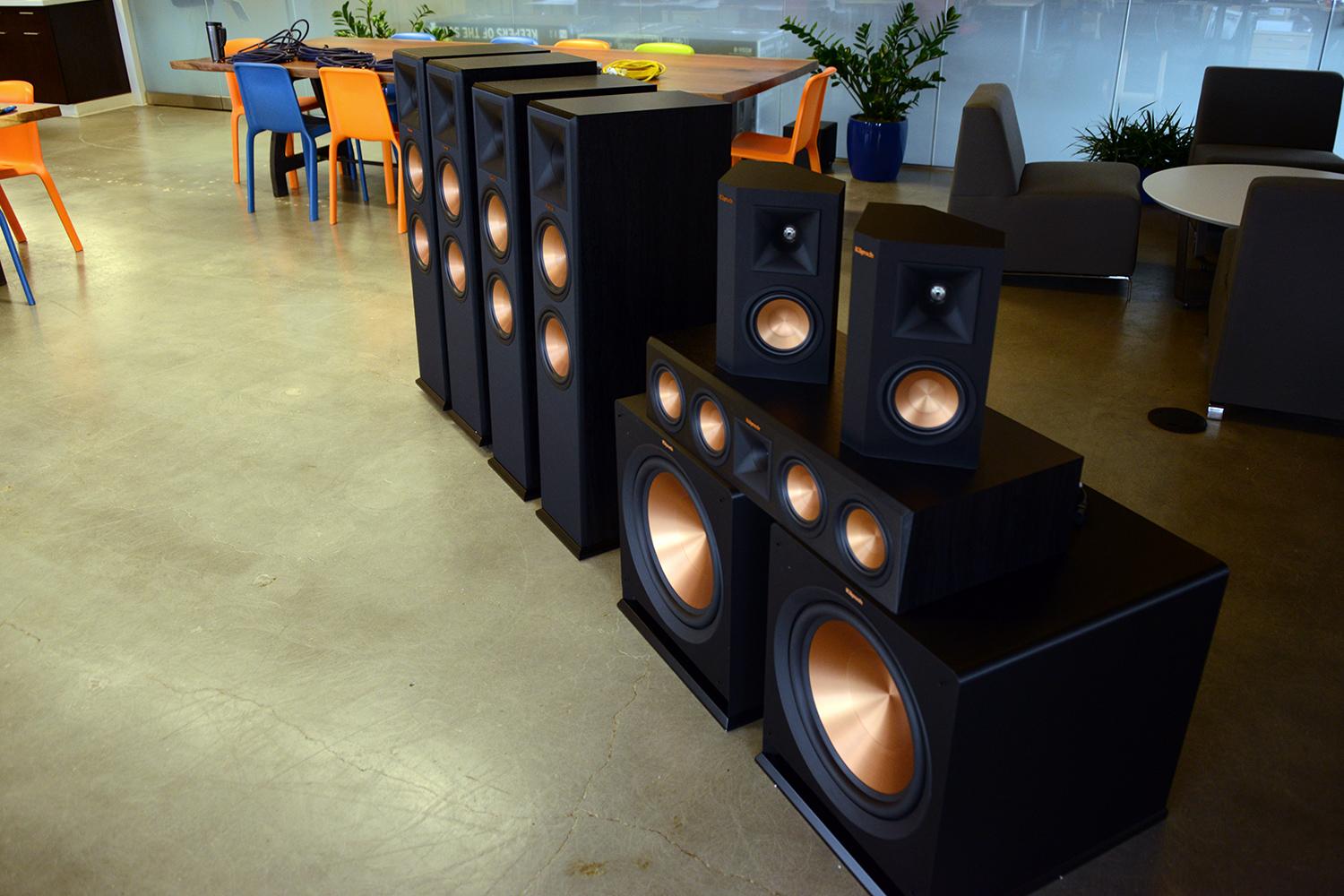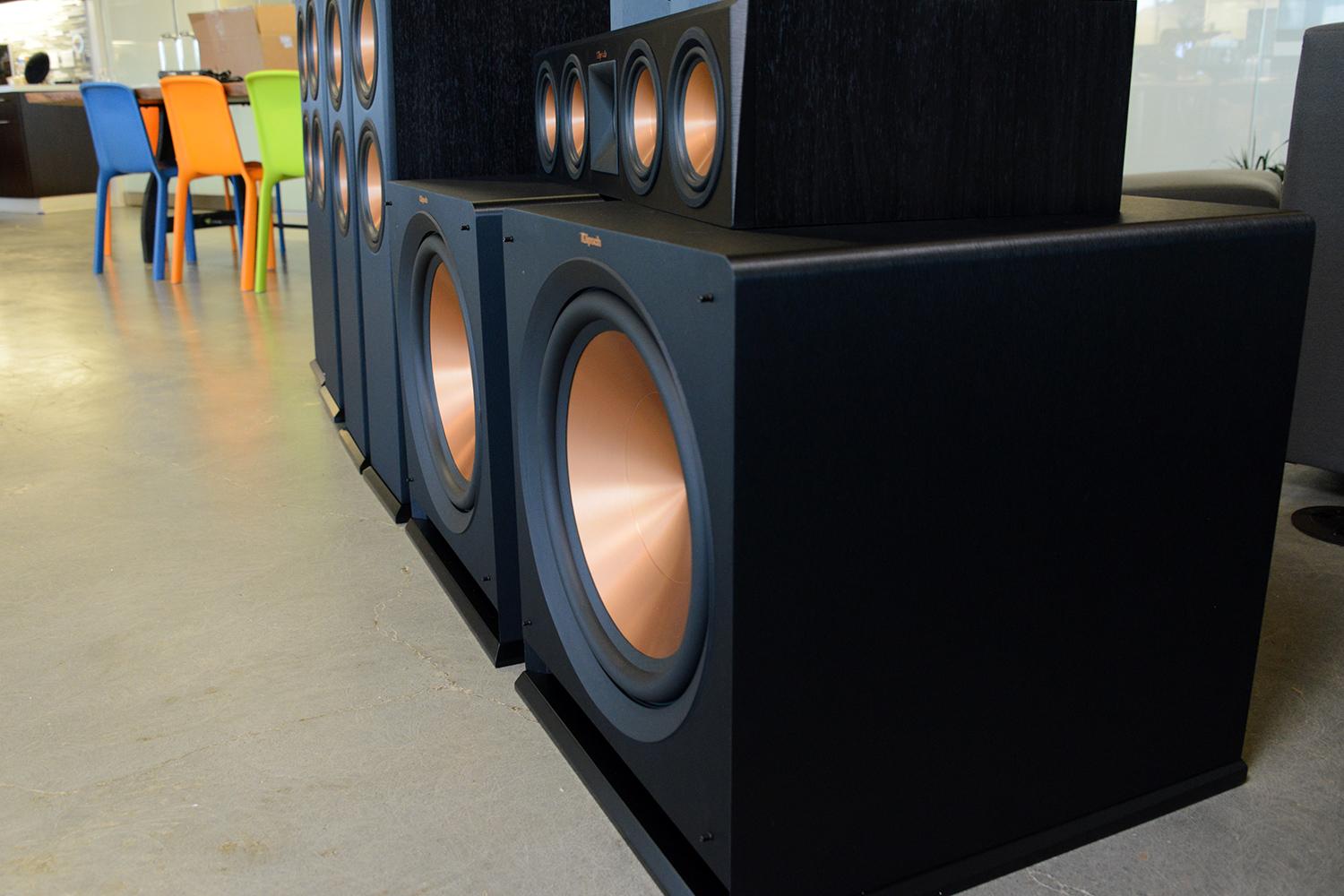Large loudspeakers are a tough sell these days. Between space restrictions and vetoes by significant others, home-theater enthusiasts often have to settle for smaller systems, even if what they really want is a big rig that rivals what you’d find in a commercial theater. On the plus side, plenty of smaller speakers are available today that produce sizeable sound without taking over a room. But for those of us with eyes and ears bigger than our living spaces (and wallets,) it’s hard not to lust after large-scale setups. Hey, it’s OK to look, right?
With that in mind, we called up Klipsch and requested a huge 7.2-channel speaker system comprising the largest models within its new Reference Premiere series. What arrived was a suite of boxes big enough to fill up a small U-Haul truck.
It was immediately apparent that our 16 x 24-foot home theater testing room would be too small.
It was immediately apparent that our 16 x 24-foot home theater testing room would be too small to allow the Klipsch system to really stretch out, so we opted to set the speakers up in our large, open kitchen and dining space, where we often entertain guests. From an acoustic perspective, the room is less than ideal – with concrete floors and large stretches of glass walls and windows – but with such an expansive space and some DIY acoustic treatments, we found the space worked really well.
To power the system, we opted for the Anthem MRX 710, a very neutral-sounding A/V receiver with plenty of headroom (120 watts per channel,) ensuring we’d experience a highly dynamic presentation while letting Klipsch’s lively speakers do what they do best. Our source for this setup was the Pioneer BDP-88FD, an absolute beast of a Blu-ray player with some serious audio chops on board (though we stuck to HDMI for most of our testing.
Video was provided by a Viewsonic PJD-7820HD which is a solid budget projector for rooms with a lot of ambient light pouring in.
The speakers in use were the Klipsch RP-280F ($579/each) for the front left, right and rear surround channels, with dual 8-inch drivers and a 1-inch Tractrix Horn tweeter in each. For the center channel, we got the big boy: an RP-450C with four 5.25-inch drivers and a 1-inch horn tweeter. The side surround channels were held down by the RP-250S, with dual 5.25-inch drivers and 1-inch tweeters. And finally, LFE information was belted out by two gargantuan R-115SW subwoofers, with 15-inch drivers and 800 watts of power each. Total system weight? 480 pounds. Total system cost? Well, that’s something else entirely.
Klipsch’s Reference Premiere system aims to deliver some serious bang for your buck, and they are wildly successful at doing so. Klipsch has trickled down the technology behind some of its ultra-high-end speakers to the Reference Premiere series, offering the company’s best sound for the dollar yet. The over-the-top system featured here runs $5,500, and that includes towers in the rear surround position, which is completely unnecessary (but, hey, we were really going for it here!). That kind of money will only get you a stereo pair of speakers from some manufacturers.
Of course, you don’t need a system this large to get huge sound. Klipsch makes scaled down versions of the speakers used here for more, shall we say, space-conscious scenarios – and they cost even less.
As you’ll see in our video, we were sufficiently impressed by how the Reference Premiere system sounded. Sometimes, bigger really is better, and if you’re going to go big, Klipsch is a very solid bet right now. The company’s speakers are sounding better and better these days, and at increasingly palatable price points.

